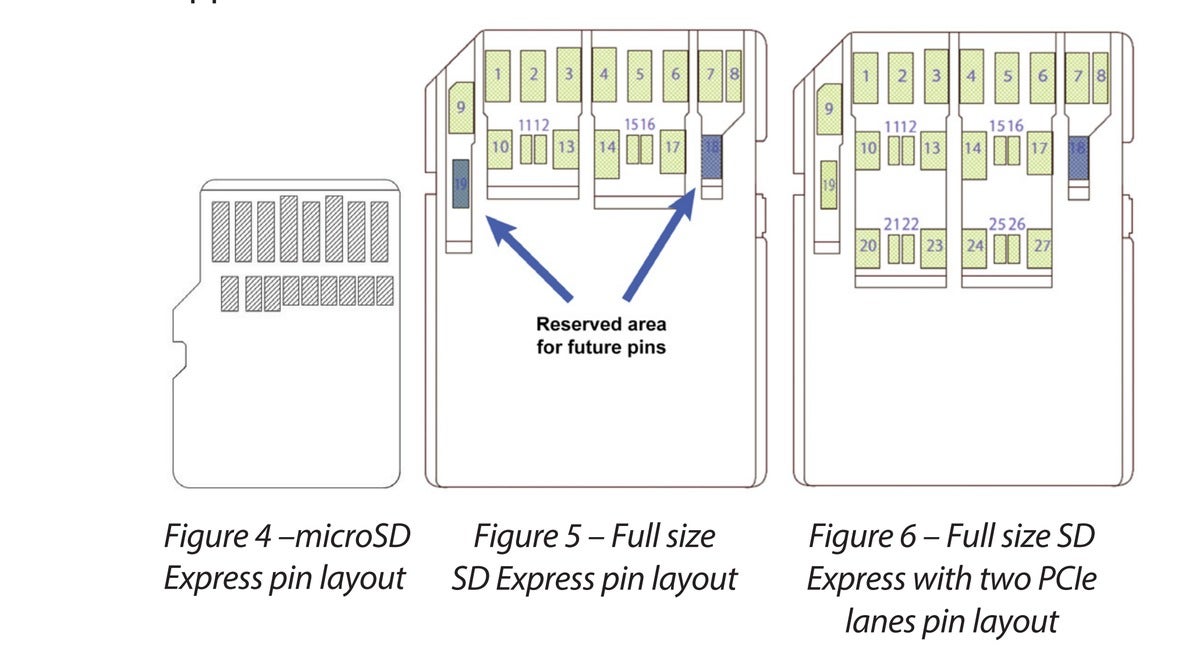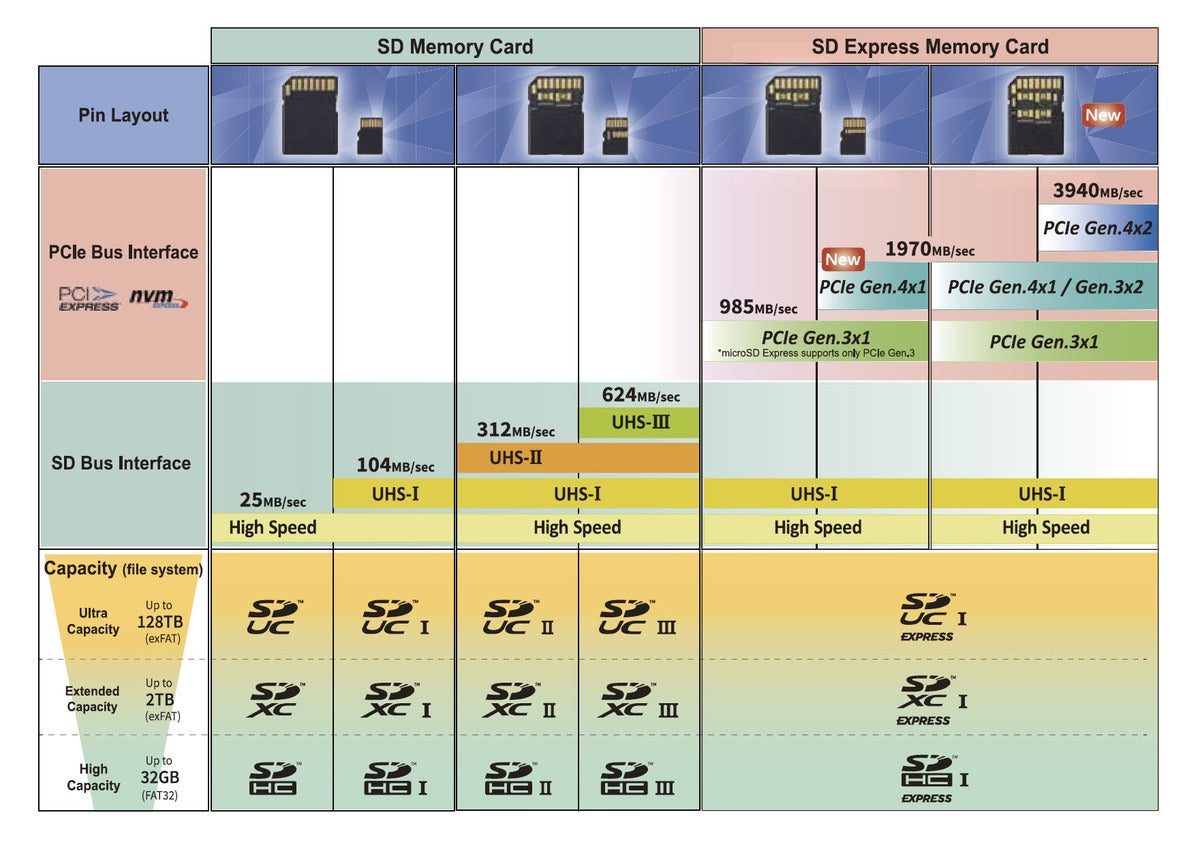[responsivevoice_button rate=”1″ pitch=”1.2″ volume=”0.8″ voice=”US English Female” buttontext=”Story in Audio”]
SD Express will support PCIe 4.0, but don’t hold your breath
The race to be the world’s next high-performance memory card standard took it up a notch this week when the SD Association said it will adopt PCIe 4.0 for SD Express cards.
Yes, you heard that right: PCIe 4.0 in a postage stamp-sized memory card, a move that will make SD cards essentially on a par with some of the fastest memory card standards out right now.
SD Express itself isn’t new, as the SD Association introduced it with version 7.0 of the spec using PCIe 3.1. With the new 8.0 spec, the SD Association moves to using up to two lanes of PCIe 4.0 for up to 4GBps of throughput.
 SD Association
SD AssociationAn SD Express card that can support two lanes of PCIe 4.0 will feature an additional third row of pins.
SD Express looks similar to existing SD cards, but the underlying interface changes significantly with the adoption of PCIe and NVMe. The SD Association made the switch from its UHS bus to PCIe to ease adopting higher speeds in memory cards.
SD Express cards maintain some backward compatibility. They will adopt both the PCIe 3.0 and 4.0 bus, as well as keep the very common UHS-I bus. That means when inserted into a camera, drone, or device that can support SD Express over PCIe, it’ll run over PCIe. When installed in an older camera or card reader in a laptop, it will fall back to the UHS-I bus and offer up to 104MBps read and write speeds.
 SD Association
SD AssociationThe SD card’s strength and weakness is its heavy focus on the consumer market.
Which memory card standard will win?
With SD Express 8.0 out now, the field for high-performance memory cards gets far more interesting, but don’t expect immediate change. The CompactFlash Association’s CFexpress—which also uses PCIe—is clearly the preferred standard in high-end imaging gear.
Sony’s PCIe-based XQD 2.0 will largely be absorbed into CFexpress 2.0, as both are compatible. The older SATA-based CFast 2.0 is likely to fade away, along with cameras that still use older ATA-based CompactFlash.
SD Express 8.0 will likely take years to be adopted, but its competitor probably won’t be CFexpress 2.0. It’ll be SD cards using the older UHS-II bus. We say that because even though the original SD Express has been out for a year now, we’ve seen scant adoption of it. For that matter, few cameras or devices even take advantage of UHS-III speeds, which became available in 2017. CFexpress 2.0 Type B cards will be used in Canon’s upcoming EOS 1DX Mk III, Nikon’s D6 and Canon’s EOS R5. The EOS R5 will have a second memory slot for SD cards, and Sony’s A7R-IV will also use SD—but both are using the slower UHS-II spec.
What this means
What this means is that eventually (and we have no doubt of this) SD Express will be common in high-performance drones and 360-degree cameras, as well as lower-end consumer cameras, laptops, and the tens of thousands of places you’ll find SD cards today. But it will take a long, long time for that to happen, so don’t get too excited about PCIe 4.0 and SD Express


























